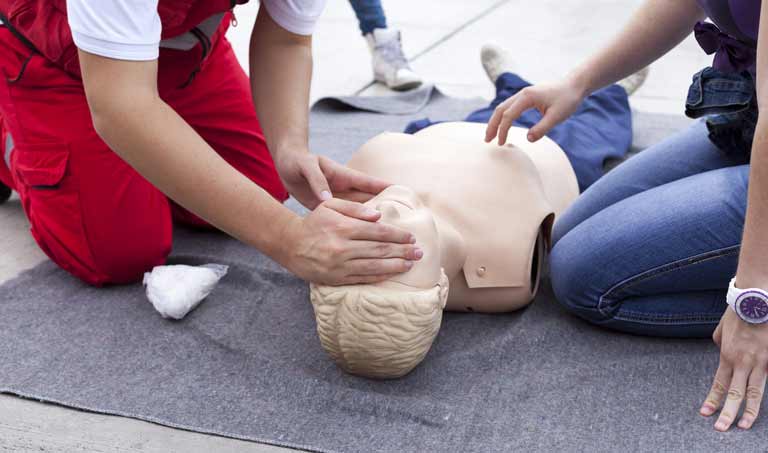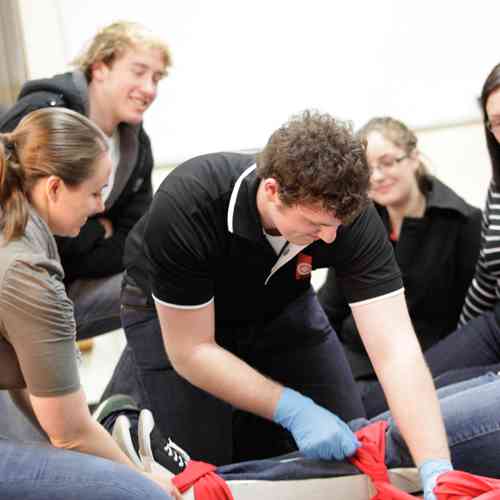Introduction
First help training is a very useful skill set that can conserve lives, giving prompt aid to hurt or sick individuals. Whether you're a moms and dad, educator, train, or simply a person that wishes to be prepared for emergency situations, comprehending the different types of emergency treatment training courses offered is essential. These courses vary in material, duration, and certification degrees, satisfying various needs and environments.
In this comprehensive guide, we'll explore the nuances of first aid courses, examining their value, the breadth of subjects covered, and just how to choose the best training course for you. With a focus on sensible abilities like CPR (cardiopulmonary resuscitation), our emphasis will certainly assist you comprehend how these classes outfit you with crucial tools for emergency situation situations.
Understanding the Different Kinds of First Aid Flows Available
What is a First Aid Course?
A first help course is developed to instruct individuals just how to supply immediate care in emergency situation circumstances. The curriculum usually covers a wide variety of topics consisting of wound treatment, choking relief strategies, and providing mouth-to-mouth resuscitation.
Objectives of Emergency treatment Courses
- Immediate Care: Equip participants with abilities to handle emergency situations up until specialist aid arrives. Prevention Education: Teach individuals exactly how to avoid accidents and wellness crises. Confidence Building: Foster self-confidence in one's ability to act decisively in emergencies.
The Importance of CPR Training
What is CPR?
CPR means cardiopulmonary resuscitation. It's a lifesaving technique utilized when someone's breathing or heart beat has actually quit. Understanding CPR can significantly enhance survival prices for heart attack victims.
Why Take a CPR Course?
Taking a CPR course not only prepares you for emergency situations yet likewise enhances your capacity to respond successfully under pressure.
Key Parts Covered in mouth-to-mouth resuscitation Courses:
- Chest compressions technique Rescue breaths Use of automated external defibrillators (AEDs)
Types of First Aid Rushes Available
Basic Emergency treatment Course
A standard first aid course typically covers basic skills needed for supplying treatment in emergency situations.
Common Subjects:
Wound management Bandaging techniques Recognizing indicators of shockAdvanced First Aid Course
This training course delves much deeper into even more facility situations such as managing several casualties or details medical conditions.
Focus Areas:
- Advanced injury care Emergency giving birth procedures Managing persistent illnesses in emergencies
Specialized Emergency treatment Courses
Different careers call for customized first aid training. Below are some specialized options:

Pediatric Emergency treatment Course
Designed for those collaborating with youngsters-- parents, teachers, and caregivers-- this program concentrates on age-specific considerations.
Highlights:
- Choking relief for infants Common childhood ailments Behavioral problems throughout emergencies
Workplace First Aid Course
Tailored especially for work environment atmospheres, this program shows workers exactly how to manage events usual in details setups like manufacturing facilities or offices.
Key Functions:
- Risk evaluation techniques Emergency emptying procedures Handling chemical spills or injuries
Online vs. In-Person Emergency treatment Courses
With developments in innovation, lots of companies now provide on-line courses together with traditional in-person sessions.
Advantages of Online Courses:
Flexibility: Find out at your very own pace. Accessibility: Attend from anywhere with a web connection. Cost-effective: Usually more affordable than classroom settings.Disadvantages of Online Courses:
Limited hands-on practice. Less interaction with instructors. Potentially reduced engagement levels.How to Select the Right Emergency Treatment Course
Choosing the appropriate first aid and CPR course can be challenging given the variety readily available today.

Considerations When Selecting a Program:
Your Needs: Are you preparing for home treatment or work environment safety? Duration: How much time can you commit? Certification Requirements: Do you need accreditation for your job?Finding Accredited Emergency treatment Courses
When choosing a first aid course, guarantee it's approved by recognized companies such as the American Heart Organization (AHA) or Red Cross.
Accreditations Issue Because They Ensure:
- Quality training standards Recognition by employers and institutions Updated curriculum showing present guidelines
First Help Accreditation Process
Steps to Acquire Your First Aid Certificate
Once you've completed your picked first aid course, obtaining your certificate commonly calls for numerous steps:
Complete the training program successfully. Pass any needed assessments or assessments. Receive your certification through e-mail or postal service.Validity Duration of Emergency treatment Certificates
Most first help certificates remain valid for 2 to 3 years relying on the providing body; therefore it's vital to restore them on a regular basis via refresher courses.
The Influence of Effective Emergency Treatment Training
Real-Life Situations Where Emergency treatment Made a Difference
Numerous accounts exist where prompt emergency treatment treatment saved lives-- from cardiac arrest cases at sporting occasions to choking cases in your home dinners.
Case Study Instance: Sudden Cardiac Arrest
In one prominent instance throughout a neighborhood marathon event, skilled volunteers administered mouth-to-mouth resuscitation efficiently resulting in successful resuscitation before paramedics arrived.
Benefits Beyond Immediate Care
Learning emergency treatment also brings about mental advantages such as increased confidence and preparedness which translates right into enhanced community wellness overall.
Frequently Asked Inquiries (Frequently asked questions)
1) What is consisted of in a regular first aid course?
A standard first aid course consists of standard techniques like wound therapy, identifying signs of distress (like shock), and carrying out CPR when necessary.
2) How long does it take to finish an emergency treatment course?
Most fundamental courses last between 4-- 8 hours while advanced courses might extend over several days depending on content deepness and complexity.

3) Can I find out emergency treatment online?
Yes! Several companies provide thorough on the internet training programs; nevertheless sensible hands-on experience is encouraged also whenever possible.
4) Is accreditation called for by law?
While not mandated by legislation universally, specific occupations do require qualifications such as educating staff or health care workers; always examine Mackay CPR Course neighborhood regulations!
5) Exactly how typically needs to I renew my emergency treatment certification?
Typically every 2 years; nonetheless this can depend on the company supplying your first training-- examine their guidelines!
6) What if I require special holiday accommodations during training?
Most approved programs enable adaptations; communicate straight with the training supplier regarding certain requirements before enrollment!
Conclusion
Understanding the different types of emergency treatment training courses readily available equips people not just with understanding but likewise fosters an atmosphere where individuals feel secure recognizing they can respond successfully during emergency situations. By spending time into discovering these vital skills-- whether with traditional techniques or modern-day on-line platforms-- you're taking aggressive steps toward making your community much safer for every person involved!
Whether you want obtaining your first aid certificate, looking into customized programs like pediatric treatment courses or just intending to brush up on your abilities through refresher classes-- the options are bountiful! So why wait? Study discovering these possibilities today!